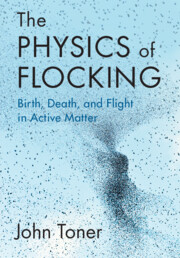Changes in the spatial pattern of flocks of barnacle geese Branta leucopsis were examined in relation to individual behaviour during feeding visits to farm pastures. The flocks were photographed every 10–20 min, and the shape and location of the flock was determined from a plan view obtained from digitized images of the photographs. Flocks initially maintained a tight formation shortly after arrival, but then tended to expand with increasing residence time. The rate of expansion, however, was significantly greater in large flocks, with small flocks showing no consistent pattern. Observed rates of change in flock area were compared with those obtained from a simple model of flock movement in which individuals followed a random walk and moved at a constant speed. In contrast to the observed data, small simulated flocks (with relatively more edge birds) showed the greatest relative increase in flock area. This discrepancy between the data and the simulation can be explained mechanistically by differences in the behaviour of individuals in flocks of different sizes. In large flocks, birds at the leading edge of the flock had faster step rates and travelled further than birds in the centre and at the trailing edge. Rates of movement in small flocks did not vary with flock position. Levels of vigilance were higher during the first 10 min after arrival, in males, in smaller flocks and at the edges of flocks. Thus, upon arrival, flocks maintain a tight defensive formation with high vigilance, but with increasing residence time, vigilance decreases and larger flocks expand, suggesting a need for individuals to reduce feeding competition.



